Nuclear Information Centre
The Half-Life Afterlife (2024...)
[NIC/NW/010]
Although situated firmly in the present, The Half-Life Afterlife takes an untroubled approach to time, reflecting on the entangled nature of our human-generated nuclear activities from the vantage point of an unspecified and undefined post-nuclear future. It assumes the form of a collection of ancient looking bentonite clay objects, recently discovered in the vicinity of Gloucestershire Airport which was thought to have become the site of a Geological Disposal Facility or GDF where the UK’s most hazardous and long-lived nuclear waste was eventually buried, deep underground.
Possibly created as radioactive waste burial charms these found objects have been subject to speculative research methods fusing nuclear fact and fiction before being catalogued and displayed in a very human attempt to imbue them with cultural significance and meaning as future nuclear artefacts.
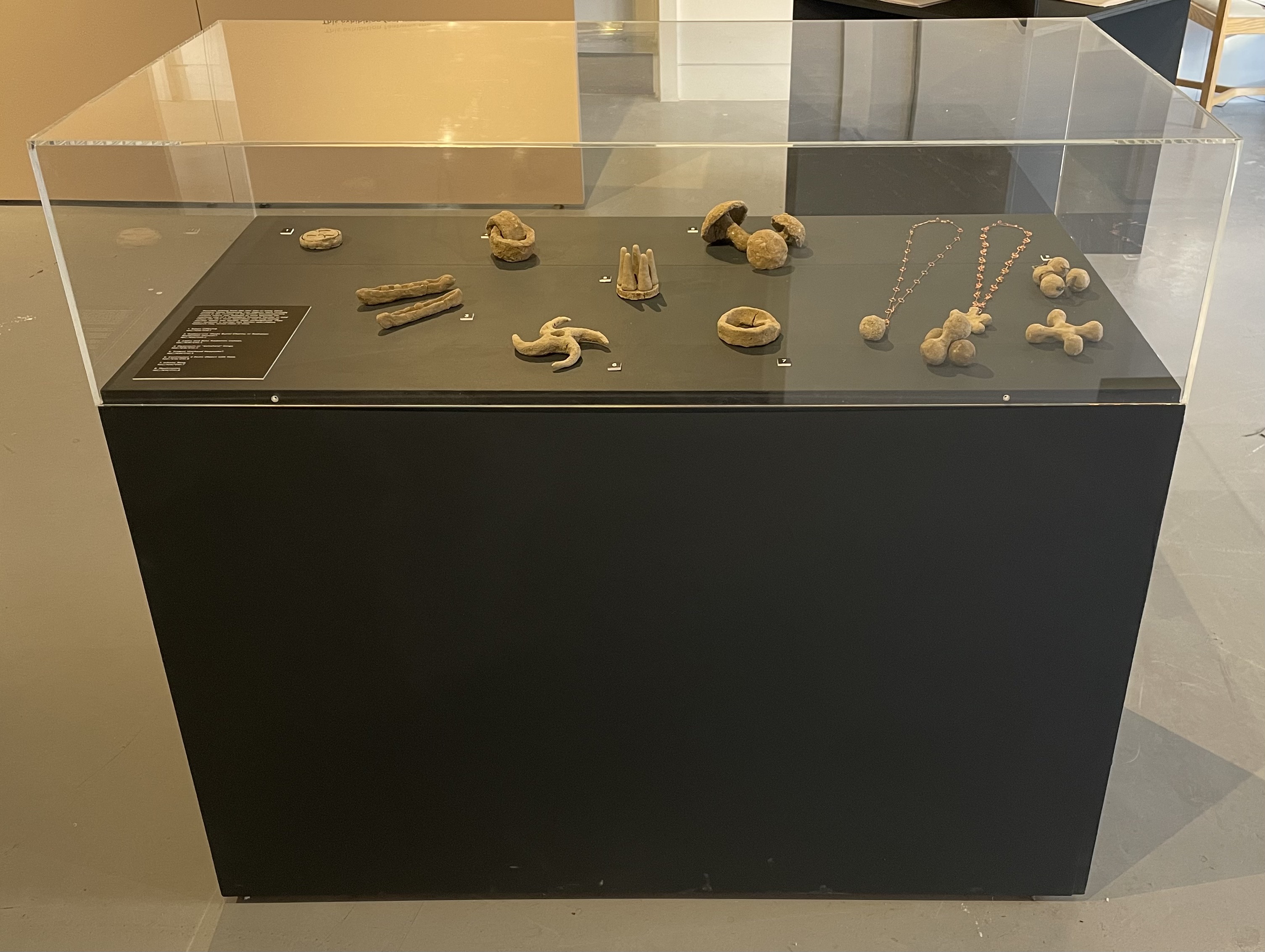
The Half-Life Afterlife at The Wilson Art Gallery and Museum, Cheltenham, January 2025
It is unclear as to why the area between Cheltenham and Gloucester might have emerged as the location of the UK’s GDF; a story forever shrouded in geological, socio-economic and consent-based mystery. It is additionally confusing as a rare surviving digital council record from the year 2024 stated “There are currently no plans in place or any ongoing discussions with Nuclear Waste Services for Gloucestershire to become a GDF site”.

Image credits: Nuclear Waste Services (NWS) and Gloucestershire Airport.
The long, drawn-out passing of atomic time has left much else for speculative future-present knowledge workers to grapple with. Did nuclear fusion finally replace uranium-based power generation? What became of nuclear weapons? What other telling traces of our atomic past remain, visible or otherwise? Perhaps we are now also in a post-human future, albeit a highly selective one that we only seem to be able to describe in familiar human terms?
Simultaneously fuelled by the known and the unknown, we find the much-anticipated legacy and significance of the nuclear fission age now weighs heavily on these small, left-behind objects.
So, what exactly are they? What stories do they tell or what stories would we like them to tell?
Token Offerings.
[NIC/NW/010.1]
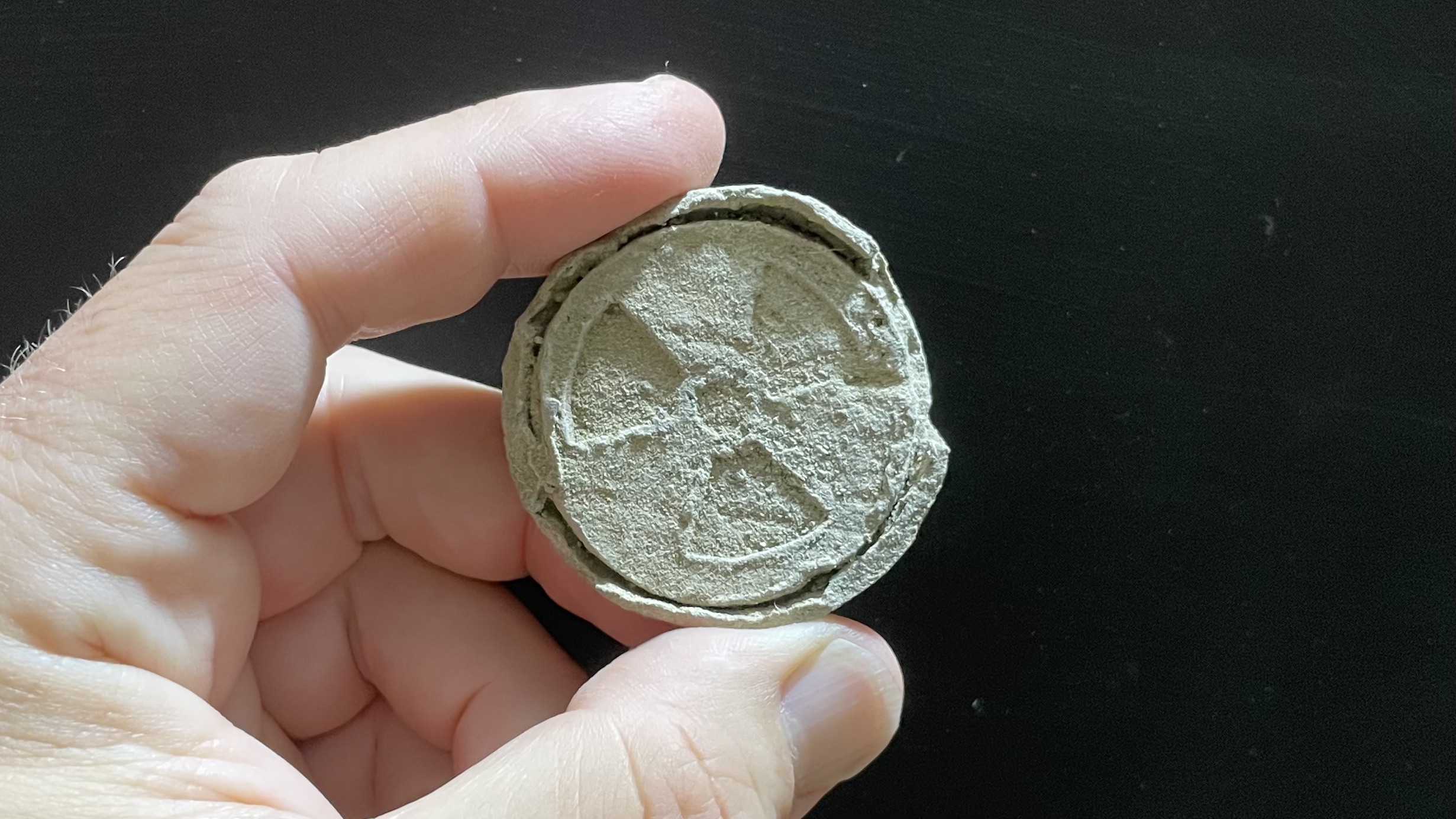
Over the course of many millennia, increasingly stretched out tales have been passed down that collectively point to the existence of scattered 20th & 21st century tribes who lived through a simultaneously pioneering and problematic period that might have become known as both the Atomic Dark Ages and Nuclear Renaissance.
Legend has it that highly engineered and much prized bentonite clay tokens were offered up to the gods by nuclear states as part of a complex tactical and strategic exchange system with the aim of securing unlimited access to the trappings of atomic power.
However, due to the same states increasingly insatiable atomic appetites, the gods eventually grew tired of accepting what was rapidly becoming an uncontrolled proliferation of tokens declaring “ENOUGH!”, forever consigning the messy and entangled remnants of our lustful nuclear dalliances to the environmental and geological dustbin before turning their attention elsewhere, away from humankind.
Surviving examples of these tokens have been found from time to time, like the one pictured above, recently discovered just outside the perimeter fence of Gloucestershire Airport, near Emergency Gate number 3.
Radioactive Waste Burial Charms or Radiation Protection Devices.
[NIC/NW/010.2]
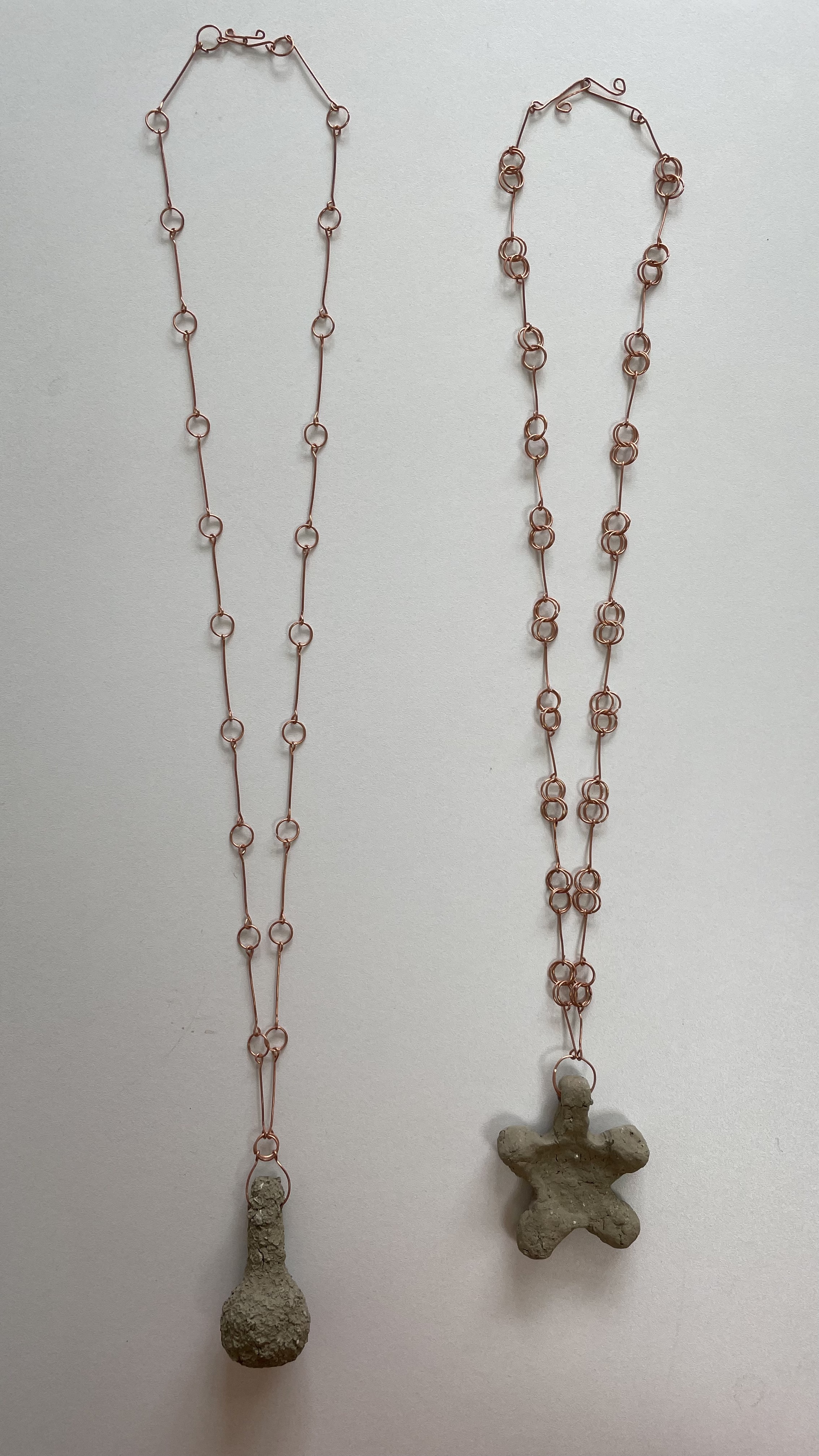


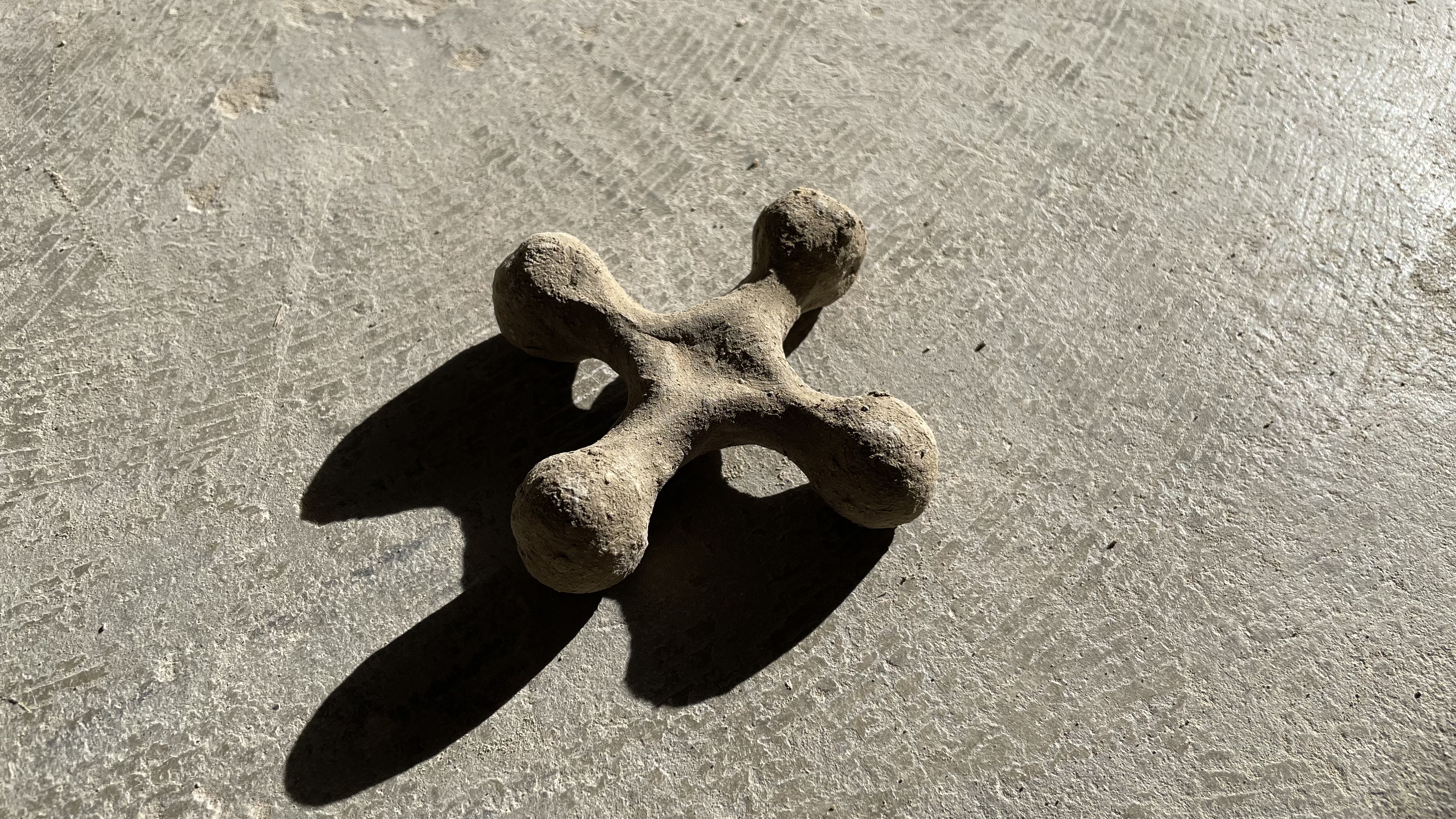
These curiously shaped clay objects could have been made as radioactive waste burial charms designed to accompany copper or steel-clad packages of alpha and beta radiation emitting waste on their final journey deep inside a GDF as they crossed over into the Half-Life Afterlife.
However, it seems unlikely they were ever meant to return to the surface so they may possibly be from an unused batch; leftovers from the 100+ years long GDF waste deposition process. Or, perhaps they were never intended for burial in the first place but designed as above ground, long-term radiation protection devices for the local GDF host community and their subsequent generations. Possibly replacing geiger counters and dosimeters as humanity began to embrace new clay-based technologies.
Perhaps there was also a need for existing engineers to re-train as clay workers following the winding down of the UK’s nuclear industries. Could existing buildings at Capenhurst, Springfields or Aldermaston have been re-purposed to this end? Maybe the Thermal Oxide Reprocessing Plant (THORP) or Magnox Reprocessing Plants at Sellafield were given new leases of life?
It is believed bentonite clay of non-UK origin was widely used as an engineered barrier material within the UK GDF due to its strong absorbent properties and ability to hold water that might otherwise act as a conduit for radioactive particles to find their way back to the surface. This may also explain why it became a desirable material for making burial charms and other clay-based protective items.
However, given the physical properties of unfired bentonite clay, we could also question why these objects found at the surface and fully exposed to the elements have not dissolved or disintegrated over time. Perhaps they have been held together by strong cultural forces?
Alpha and Beta Radiation Canoes.
[NIC/NW/010.3]
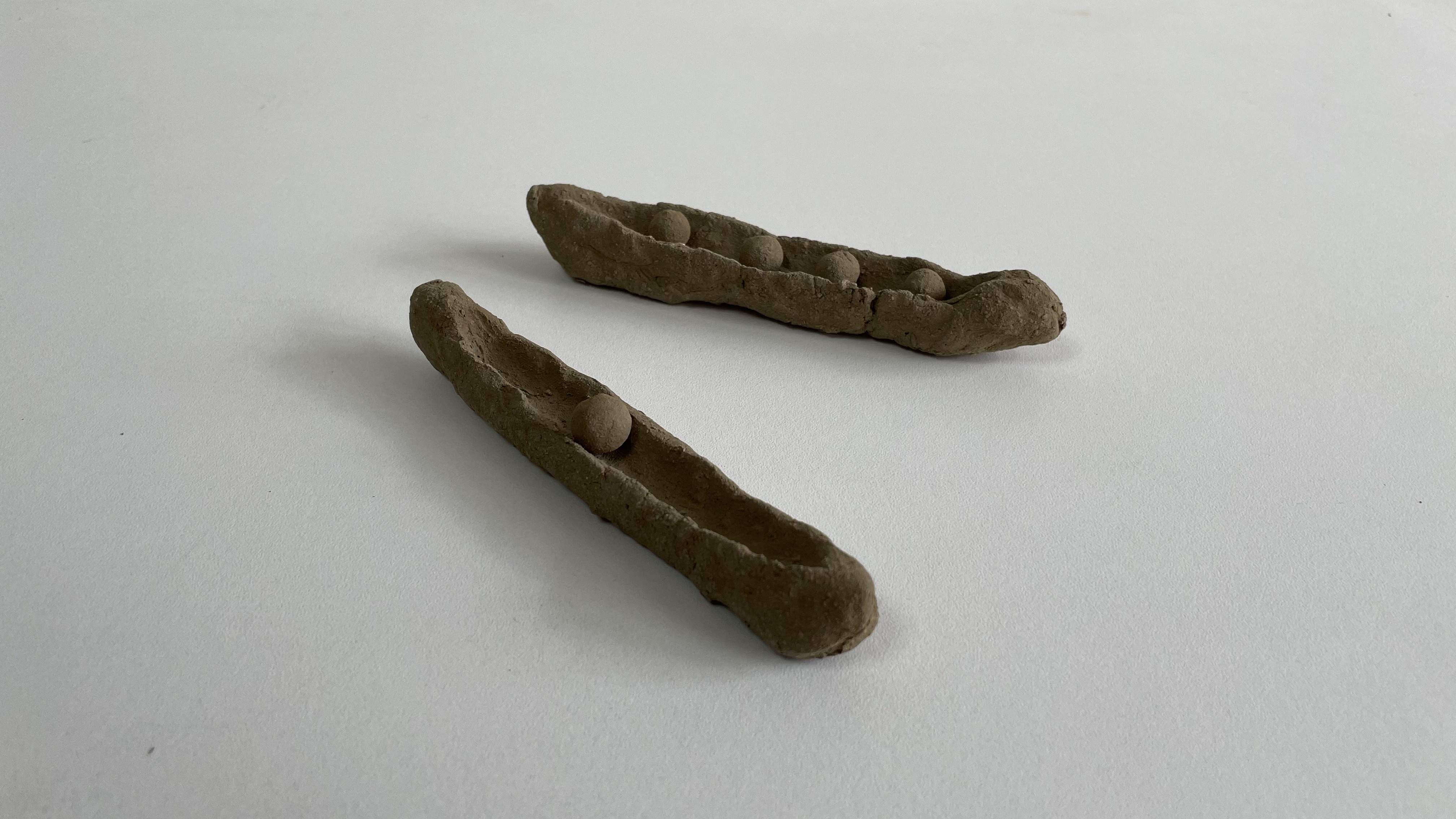 It is somehow known that nuclear fuel, Defence Nuclear Material (DNM) and Special Nuclear Material (SNM) was regularly transported between atomic sites in highly engineered, suitably shielded containers by rail, road or sea. This was generally deemed to be a high hazard but low risk activity with few reportable incidents although routes and timings of transports were deliberately kept fluid for security reasons. Was our ability to control on-site nuclear material and events always as successful?
It is somehow known that nuclear fuel, Defence Nuclear Material (DNM) and Special Nuclear Material (SNM) was regularly transported between atomic sites in highly engineered, suitably shielded containers by rail, road or sea. This was generally deemed to be a high hazard but low risk activity with few reportable incidents although routes and timings of transports were deliberately kept fluid for security reasons. Was our ability to control on-site nuclear material and events always as successful?Perhaps these unmanned pea pod-like canoes, laden with their toxic cargos of alpha and beta emitting fission products were created as reminders of less controlled human generated radioactive excursions, travelling wherever wind and water took them.
Or maybe they were designed to accompany waste packages as they entered a GDF. Possibly to protect against the eventuality of radioactive particles escaping their multi-barriered containment and finding their way back to the surface in levels that could cause harm.
Plutonium or “Sellafield Rings”.
[NIC/NW/010.4]
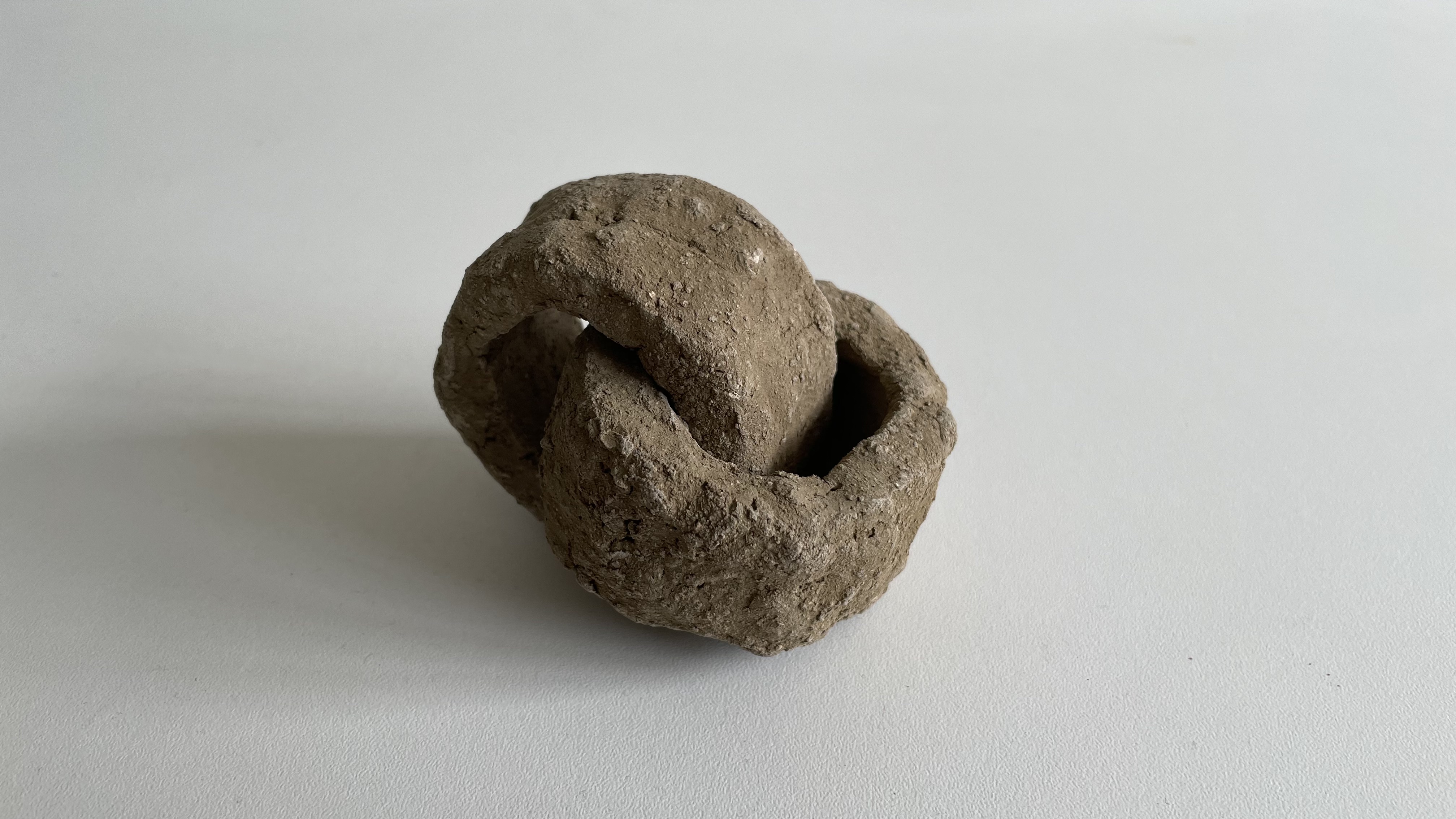 Although officially kept largely separate, the UKs civil and military atomic activities were known to be uncomfortably intertwined. Interlocking rings, such as the example shown here, may have been created to accompany buried waste packages of plutonium that had its origins in both civil and military spheres. Unexpectedly long-lasting and well cared for written records indicate the UKs first commercial nuclear reactors at Calder Hall and Chapelcross were also used to manufacture and supply plutonium to the UK’s homegrown nuclear weapons programme. In addition, it has been speculated that weapons grade plutonium was sometimes cast into approximately 5kg non-critical rings, each one enough to form the spherical core of one bomb or warhead.
Although officially kept largely separate, the UKs civil and military atomic activities were known to be uncomfortably intertwined. Interlocking rings, such as the example shown here, may have been created to accompany buried waste packages of plutonium that had its origins in both civil and military spheres. Unexpectedly long-lasting and well cared for written records indicate the UKs first commercial nuclear reactors at Calder Hall and Chapelcross were also used to manufacture and supply plutonium to the UK’s homegrown nuclear weapons programme. In addition, it has been speculated that weapons grade plutonium was sometimes cast into approximately 5kg non-critical rings, each one enough to form the spherical core of one bomb or warhead.Additionally, it was believed the UK once held the largest global stockpile of nominally peaceful plutonium. For many years this toxic inventory remained in limbo at Sellafield awaiting potential conversion into civil nuclear fuel or possibly for military purposes. Ultimately it is thought all the UK’s plutonium was eventually immobilised and put beyond reach deep inside a GDF along with a clay burial charm to watch over each waste package indefinitely.
Perhaps in time, leftover examples of these interlocking objects may become more popularly known as “Sellafield Rings”. Perhaps they already are?
Trident Warhead Keepsake?
[NIC/NW/010.5]
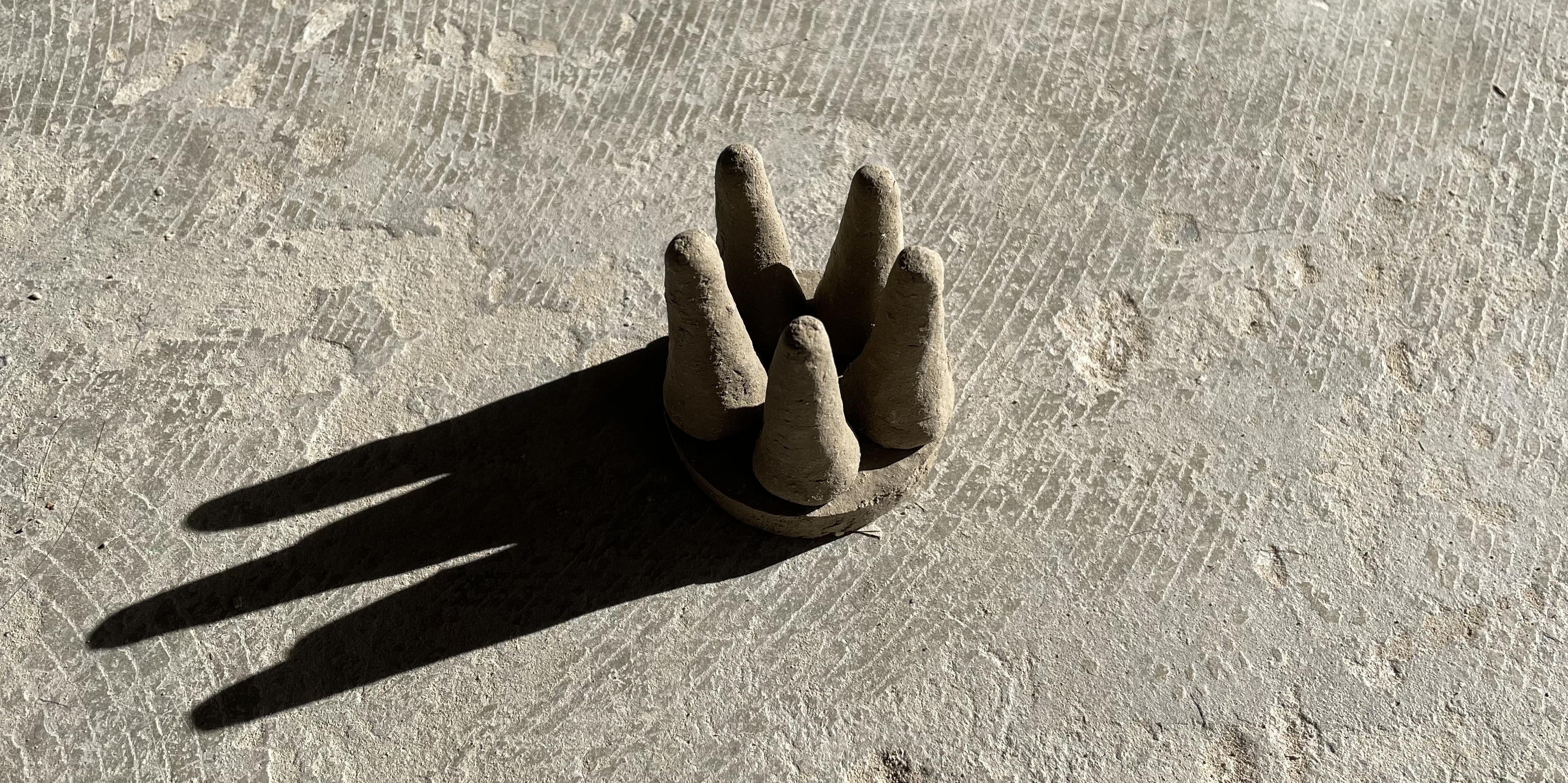
Thanks to a proliferation of passed down stories we know that for a time, certain so-called civilised peoples developed, deployed and detonated nuclear weapons as a way of demonstrating their power and status under the guise of necessity and protection. Some of them spread out further across the globe and occupied lands where they would continue to stage ritualistic experiments, seemingly at any cost, to appease the various gods of war to whom they were in thrall. The United Kingdom was one of those countries whose nominally independent defence nuclear activities culminated with the United States leased, submarine-based Trident missile system, but armed with Great British Warheads.
Although detailed technical knowledge has long since been forgotten we do know that payloads of varying yields were deployed atop Trident missiles in conical clusters of up to 8 warheads, mounted on Multiple Independently Targetable Re-entry Vehicles or MIRVs.
It is generally believed the UK did not necessarily deploy the full possible complement of warheads on each missile, perhaps on the basis that five per missile was enough?
The conditions that somehow prevailed to bring about their eventual decommissioning, disarmament and disposal remain unclear but small surviving, possibly keepsake-like objects such as the one shown here occasionally make themselves known, perhaps assuming the role of signifiers or pointers to past human nuclear technologies and weapons of war.
Continuous 4 Point Object with Hole.
[NIC/NW/010.6]
There is (or was at the time of writing) a rather lovely exhibit in the Keswick Museum (Cumbria, UK) of mysterious objects with holes that date from around 3700BC.
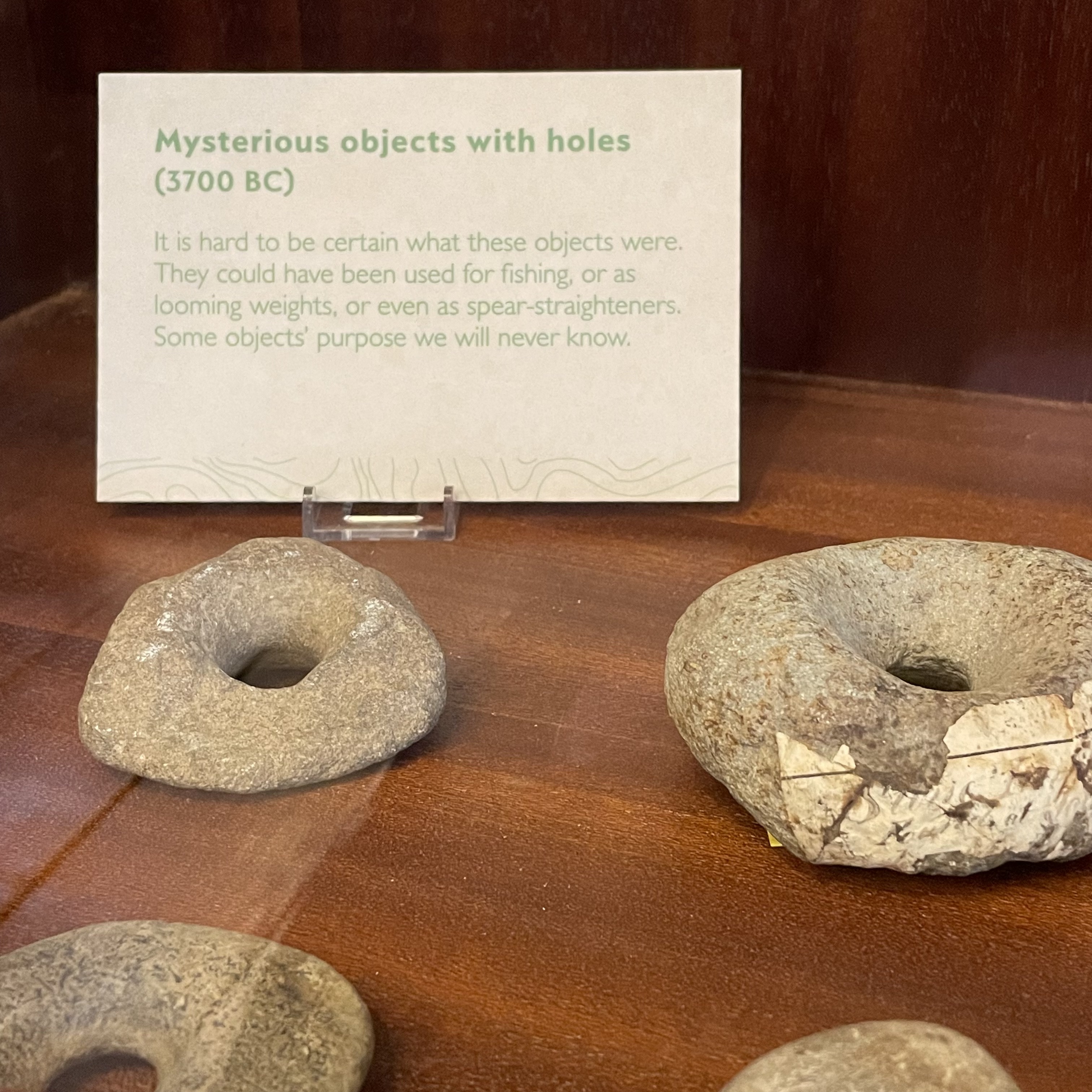
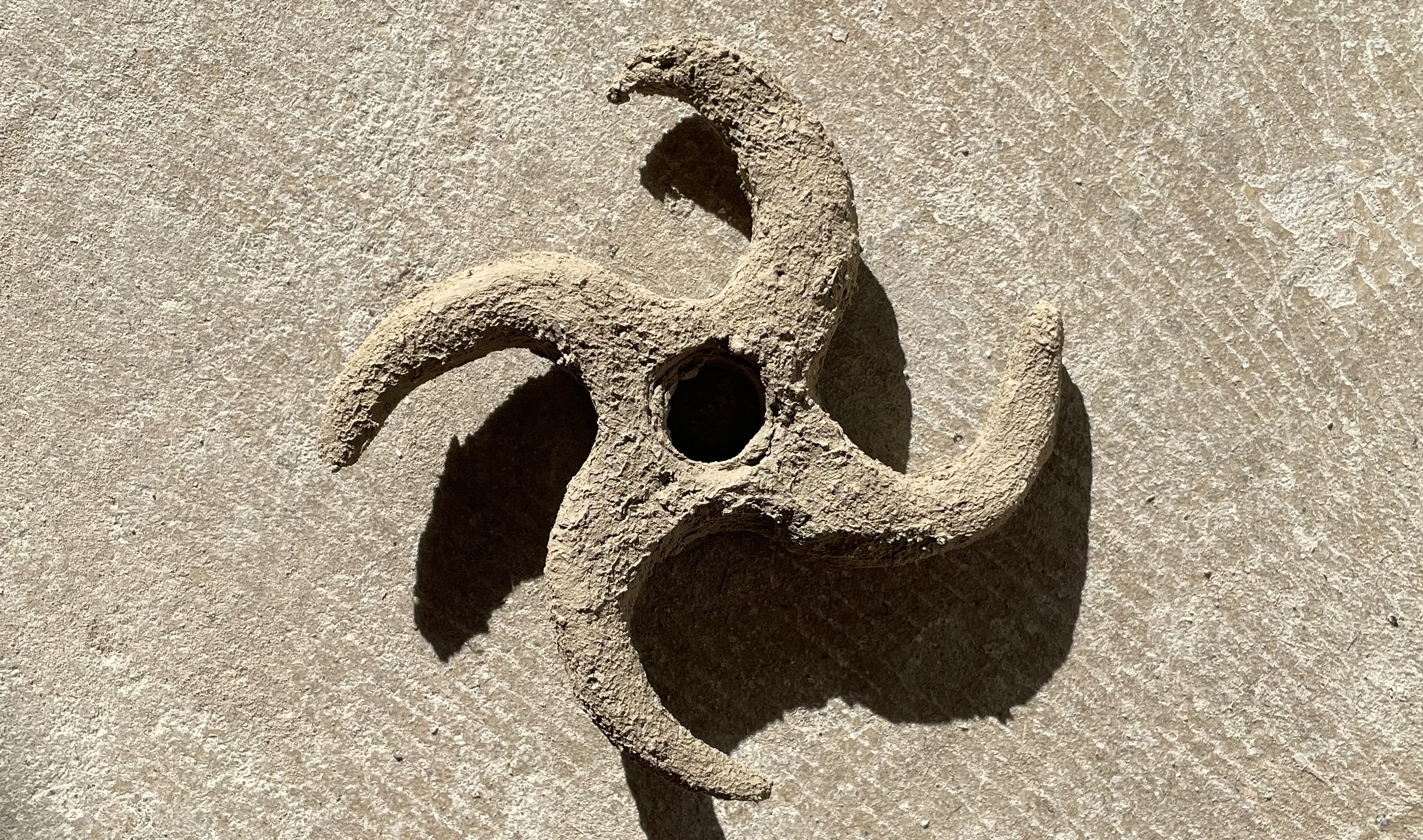
By chance, the mysterious object with hole that you can see above was found in the vicinity of Gloucestershire Airport in 2024 which we now know was also the supposed site of a future UK GDF. It is possibly related in some way to radioactive waste arising from the UK’s Continuous at Sea Deterrent (CASD), also known as Operation Relentless which deployed up to 4 nuclear powered and nuclear missile armed submarines on rotation, officially keeping us all safe from the most extreme global threats 24 hours a day, 365 days a year. Thanks to assumed charms such as this, we were and may still be, officially kept safe from now buried radioactive waste 24 hours a day, 365 days a year.
Infinity Ring.
[NIC/NW/010.7]
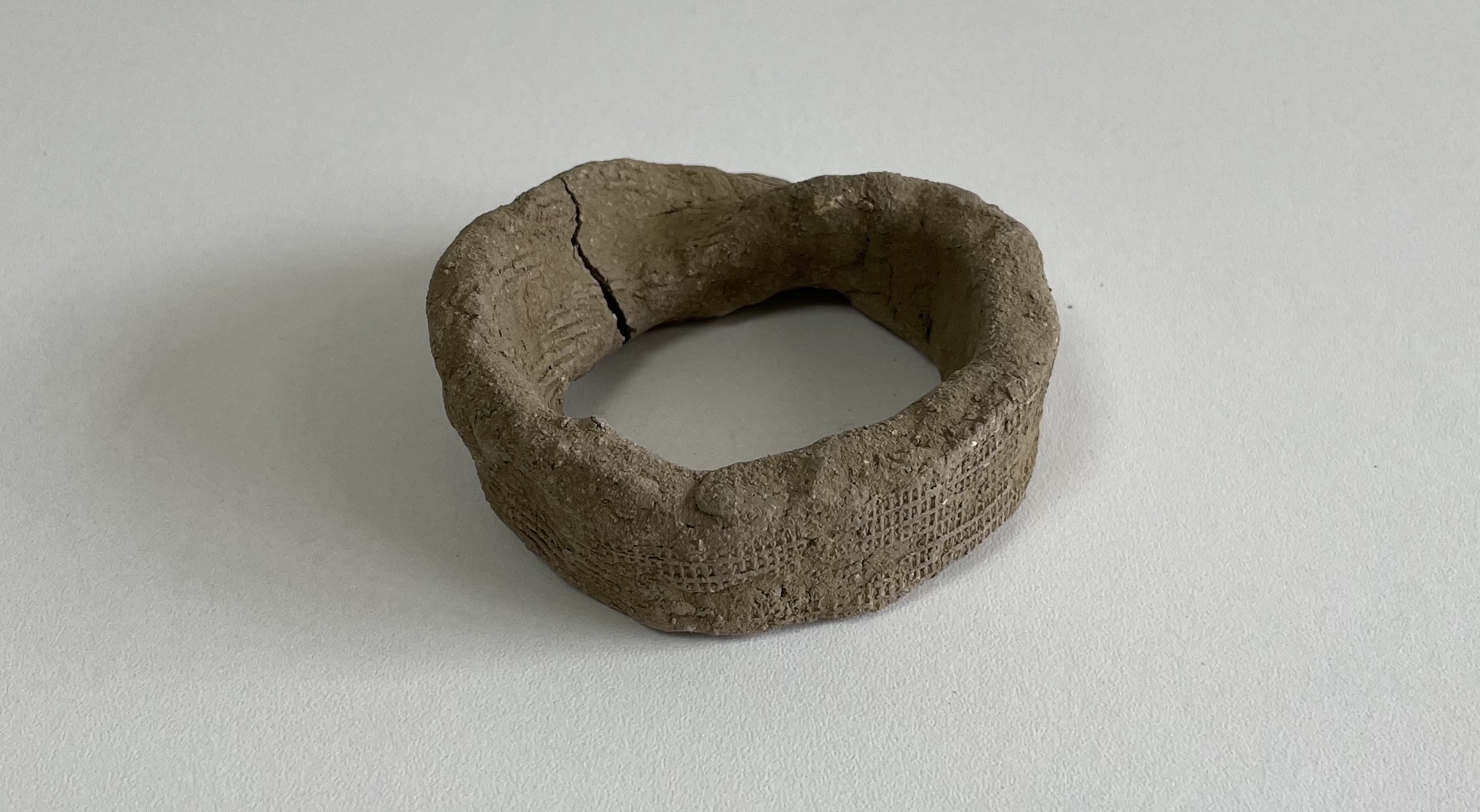 This object appears to have been shaped in the form of a continuous or “Mobius” strip. Some radioactive isotope half-lives such as Uranium-235 were known to run into millions of years which, although technically a finite duration, has a certain endlessness to it in terms of human comprehension.
This object appears to have been shaped in the form of a continuous or “Mobius” strip. Some radioactive isotope half-lives such as Uranium-235 were known to run into millions of years which, although technically a finite duration, has a certain endlessness to it in terms of human comprehension.As high-activity, long half-life, radioactive material was engineered to be permanently entrusted to the deep underground, perhaps objects like this were designed to mark the moment of transfer from the human realm into the continuous, non-human care of the GDF?
Mushrooms.
[NIC/NW/010.8]
 The meaning and purpose of mushroom shaped objects such as the ones you can see here is unclear but culturally intriguing. There is speculation on a possible link between the network of tunnels and vaults that comprise a GDF and the underground fungal threads of a mycelium. Also, strangely thriving written records tell of radiotrophic fungi which may have once proliferated around the Chernobyl area after successfully adapting to use ionizing radiation as an energy source. Perhaps mushroom-like bentonite burial charms were thought to offer protection by absorbing radioactive particles that might have otherwise found their way back up to the surface as the unwanted fruits of a GDF.
The meaning and purpose of mushroom shaped objects such as the ones you can see here is unclear but culturally intriguing. There is speculation on a possible link between the network of tunnels and vaults that comprise a GDF and the underground fungal threads of a mycelium. Also, strangely thriving written records tell of radiotrophic fungi which may have once proliferated around the Chernobyl area after successfully adapting to use ionizing radiation as an energy source. Perhaps mushroom-like bentonite burial charms were thought to offer protection by absorbing radioactive particles that might have otherwise found their way back up to the surface as the unwanted fruits of a GDF.Or perhaps they refer in some way to the proliferation of Small Modular Reactors (SMRs) that spread across the UK and globally during the Nuclear Renaissance, sprouting up from the geosphere as the visible traces of a highly energetic human generated atomic mycelium.

There were also stories of nuclear sites becoming self-propagating, appearing in the most unlikely places, possibly from small modular wind-borne spores.
It is also believed that fungi and mycelium became popular motifs within 21st century culture and were critically deployed for analogous purposes. Further speculative research may reveal more on this in time but for now these surviving clay mushrooms enjoys their elevated cultural status alongside all the other objects thus far accessioned into The Half-Life Afterlife.
Information last updated: Thu 13 Aug 2025
Back